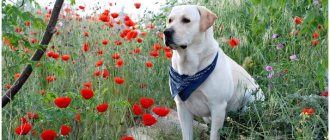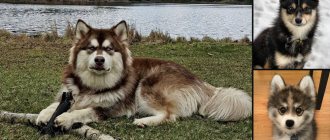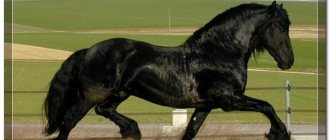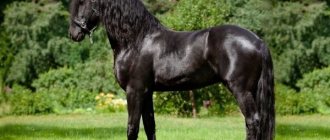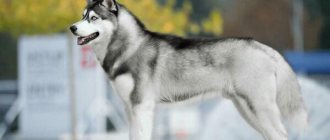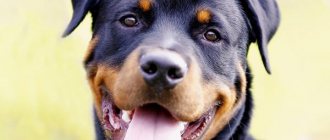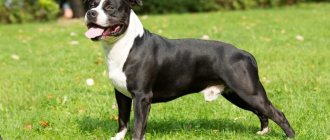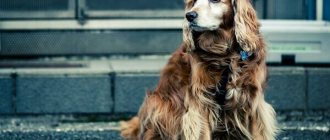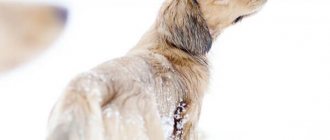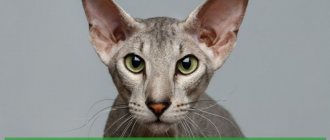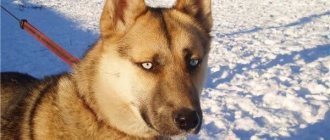Home » Interesting collections about cats and dogs
Huskies are one of the most popular dog breeds, but they have their own unique personalities. These companions can be destructive, especially when the owner is not around. For this reason, many people want to get a dog with a similar appearance. In addition, unscrupulous breeders sometimes sell mixed breeds and representatives of other breeds under the guise of huskies, so it is important to be able to distinguish related breeds.
- 2 Wolfhound of Saarloos
- 3 Alaskan Klee Kai
- 4 Czechoslovakian Wolfdog
- 5 Samoyed Laika
- 6 Tamaskan dog
- 7 Northern Inuit
- 8 Utonogan
Malamute
You can tell a malamute from a husky simply by their looks: the former look good-natured, while the latter are more reminiscent of mischievous foxes. The main difference is the eye color. If Huskies are usually blue, then Malamutes are always brown. Malamutes are denser in build and hardy. Their fur is darker and coarser. The tail is usually raised and slightly curled. Malamutes are slower, more reserved and calm, so they cause fewer problems, but they also need to be dealt with and allowed to splash out their energy.
Malamute is rather a cross between a wolf and a bear.
Why do huskies end up in shelters?
By visiting any of the sites that offer shelter dogs, you can see how common huskies are found there.
Most of them ended up in the shelter for a completely banal reason - they ran away from their owners. Some huskies manage to find new owners only in private homes, since “runaways” have an uncontrollable and freedom-loving disposition - walls, doors and furniture are not barriers for huskies. On their way they destroy everything.
There is a known case when it was necessary to take a photo of a one-year-old husky for an advertisement. The young dog tried to get out of the collar and wanted to run away, despite the good attitude of the owners. I had to pull the leash tight and secure the dog so that he wouldn’t move for at least a couple of seconds. This is a small example of the wild, freedom-loving and rebellious spirit of the husky, which is to the taste of few.
And although breeders are aware of the complex nature of huskies, they still “disappoint” their owners and end up in shelters. Looks like fashion is to blame.
We also recommend reading:
I would never have thought that I would have a dog, because I am a cat lover, a poultry farmer, a fish farmer and a rat breeder (true story) 10 puppies is not the limit! Chihuahua Lol was included in the Guinness Book of Records Top 10 strongest jaws on the planet Vasya: an unusual cat who came into the family on his own (a real story from a reader)
Wolfdog of Saarloos
The ancestors of the Saarloos wolfdog are German shepherds and wolves. This is an unusually intelligent companion that becomes strongly attached to its owners. However, high intelligence can also be considered a disadvantage: these dogs can try to dominate their owners, so they are not suitable for beginners. Due to their independence, representatives of the breeds are often used as rescuers and guide dogs.
An interesting feature: Saarloos dogs cannot bark, they only howl like wolves
How to choose a puppy
The character and individual characteristics of the breed appear at 4 months of age. It is at this time that it is recommended to buy pets.
It is almost impossible to choose the best puppy, as they change as they grow. If the goal is to buy a husky to participate in exhibitions, only experienced dog breeders can help in choosing.
Advantages of buying a Husky puppy and care details:
- the baby will easily adapt to the lifestyle of his owners;
- increased attention to yourself will allow you to better know his inner world;
- Husky puppies quickly learn the rules of behavior;
- Babies require increased attention and you need to spend a lot of time playing with them.
If you buy an adult dog, then this moment has its advantages:
- established character;
- trained in rules of conduct;
- surprises in terms of interior damage are excluded.
The cost of puppies depends on how purebred the husky is. Purchasing purposes also influence the price.
- Pet - class is not suitable for participation in exhibitions, but will be a good friend. Such dogs are sold without a pedigree and have some distinctive characteristics from the breed standard. Puppies cost from 20,000 rubles.
- Breed class puppies are sold with good pedigree and fully comply with the standard. The price starts from 30,000 rubles.
- Show class is the most expensive. The starting price for show-class huskies is 50,000 rubles. Puppies have high characteristics, both in appearance and in the achievements of their parents. The sale of such puppies begins at 6 months of age; only during this period can the dog’s compliance with all standards be fully confirmed.
In any case, no matter what class of puppy you buy, he will turn out to be a good friend and companion with whom you are not afraid to go on a trip.
Alaskan Klee Kai
These dogs are often called a miniature version of a husky. In fact, this is so: the ancestor of the family was, presumably, a husky with the dwarfism gene, which they decided to fix. However, there is controversy over the nature of the dogs. Most owners claim that the Alaskan Klee Kai is a more balanced and calm breed. These pets also do not tolerate loneliness very well, but are less prone to running away and destructive behavior. Unfortunately, this is a rare breed, so the average cost of puppies is 100,000–150,000 rubles.
Representatives of the breed have a cute habit of washing themselves with their paws, just like cats do.
Origin story
The Siberian Husky has been living with humans for several centuries. Bred in cold climatic conditions in the Far North. Local residents needed a dog that could easily cover long distances and transport people and cargo. The formation of the husky's character was greatly influenced by regional climate conditions with fairly low temperatures. Under their influence, the structure of the animal was formed.
Since the 20th century, there has been an active spread of the breed throughout the world. Residents of the American continent appreciated such qualities of their four-legged friend as agility and the ability to walk smoothly in a harness.
Alaskan mushers needed dogs for sled dog racing. The legendary husky Togo, in the team of Leonard Seppala, did not give up the championship for many years in a row. However, he gained fame for completely different merits.
In 1925, a dog relay race was held, during which Leonard Seppala's team, led by Togo, covered a long section of the route and reached a small town in Alaska. The inhabitants of Nome were exposed to a fatal disease, and the dog Togo, with other dogs in the sled, delivered them anti-diphtheria serum. Thanks to him, residents received a chance for recovery.
At that time, getting to the small town was completely problematic, since natural conditions did not allow it. The leader of the pack with his faithful dogs covered 146 km of the road, 80 km of which they walked on the ice of Norton Bay in severe frost conditions of -400, with a strong snowstorm. Togo's endurance, courage, and instincts helped the team reach the town of Noma and help people.
Since huskies were sled dogs, their further selection was carried out in America; in our country, sled dogs were considered unpromising.
In the USA, as a result of crossing aboriginal sled dogs with huskies, mixed breed pets appeared that outperformed huskies in racing competitions. However, the developed dog breed was not recognized by international organizations, since the varieties were of different types.
In the 70s, the breed was presented at exhibitions. L.Demidoff and E.Sili convinced people that a bright dog with blue eyes is suitable for keeping in an apartment, as it is a companion dog.
In the 90s, the husky returned to Russia, its historical homeland. In 1995, the first dogs were brought from the Czech Republic and Belgium. By 2000, the number of husky puppies increased to 150 individuals.
Czechoslovakian Wolfdog
The Czechoslovakian Wolfdog is another cross between a German Shepherd and a wolf. Another name for the breed is wolfdog. Color varies from gray to reddish. Externally, representatives of the breed really resemble wolves. The owners note that these are very loyal and friendly dogs, but they need proper socialization. Otherwise, “wild” habits take over.
The Czechoslovakian Wolfdog appeared relatively recently - the breed was recognized by the FCI in 1999
Age of change
The beginning of the twentieth century was a turning point in the history of the breed. Soviet dog handlers decided that this dog was too small for cargo transportation, and therefore useless. She lost her breed status and breeding was prohibited. A new round of development of the breed occurred thanks to the Americans. Around 1930, the Alaska Gold Rush began and several teams of huskies were taken there. It was here that sled dogs showed themselves in all their glory. The path to the mines was not close, but with such partners it became much more fun.
Huskies began to rapidly gain popularity and participate in a variety of exhibitions and competitions. Around this time, representatives of the glorious breed even became national heroes, fighting their way through a snowstorm with a load of medicine for the city. The Husky dogs shone again. Photos of hero dogs were seen by the whole world.
Samoyed husky
The Samoyed husky looks less like a husky, but it looks like a snow-white wolf. Most representatives of the breed boast a fluffy white coat. However, it requires intensive care, otherwise the fur may become tangled. These are beautiful dogs, but they are not suitable for beginners due to their stubborn and capricious nature.
Cream spots, cream coloring and freckles on the nose are acceptable in the color of the Samoyed dog, and the first four generations of breeding of these dogs were completely black
Summary table: common and different between breeds
| Characteristic | Husky | Malamute | Laika | Samoyed | Mini kli-kly | Akita Inu |
| Size | 54–60 cm | 59–64 cm | 55–59 cm | 53–57 cm | 38–43 cm | 61–67 cm |
| Weight | 20–27 kg | 34–39 kg | 18–25 kg | 17–26 kg | 6–10 kg | 30–45 kg |
| Head | The width of the muzzle is average, the skull is quite dense | Wide and powerful, the muzzle is slightly shorter than that of a husky | Elongated muzzle (narrower than a husky) | Triangular muzzle with a large fleshy nose, almond-shaped eyes | Wedge-shaped, tapering towards the tip | The muzzle is narrow, the skull is rounded; there are characteristic skin folds in the cheek area |
| Body | Strong with well-developed muscles | Stocky and muscular | Compact and thinner than a husky | More graceful than a husky | Dense and strong for its size | Stocky and muscular |
| Tail | Low set, lowered down or standing in a semi-circle above the back | Medium set, most often the dog holds it above the back in a semi-ring | Medium set, most often the dog holds it above the back in a semi-ring | Set high, the dog holds it thrown over its back or side | Covered with thick fur, lies on the back or side of the dog | Set high and curved into a donut, lying on the back or side |
| Wool | Medium length, quite soft, with pronounced undercoat | Medium length with a very dense but harsh undercoat | Medium length, soft | Thick, soft, long | Medium length, quite soft, with pronounced undercoat | Short but soft, has a thick undercoat |
| Color | Any | Any spotted color, the only acceptable solid color is white | Any spotted color | Solid white only | White-black, white-gray, white-red, black-white-red | Red and white, brindle and pure white |
| Lifespan | 13–15 years old | 9–10 years | 13–15 years old | 13–15 years old | 14–16 years old | 10–12 years |
| Activity | Very high | High | Average | Average | Average | Moderate |
| Training | Requires patience and a lot of time due to the stubbornness and restlessness of the dog | The dog is smart, but difficult to train | Quickly learns commands, willingly obeys a person | Easy to train, obedient dog, but can be stubborn | Easy to learn | Requires patience and a lot of time due to the stubbornness of the dog |
| Aggressiveness | Overall the dog is considered friendly | Aggressive towards other animals | Friendly to both people and animals, as long as they do not threaten the dog or its owner | Friendly to people and large animals, but small animals can be perceived as prey | Not prone to causeless aggression | Aggressive towards strangers and other animals |
Huskies are easily confused with other members of the Spitz family. There are similar ones among the experimental hybrids of domestic dogs and wild wolves. But it is worth remembering that all dogs have their own character traits. They must be carefully studied so that problems with the pet do not arise later.
Tamaskan dog
The Tamaskan dog was developed in Finland. It is the result of crossing a Malamute, a Husky and a German Shepherd. The result is family companions that enjoy playing with other pets and children, but look like real wolves. These pets can be very large: weight reaches 40–45 kg.
They need constant physical activity and long walks.
Aries - Alabai
A true comrade in arms: he won’t let the enemy near, and will hide behind his partner’s back only to suddenly jump out at the right moment and bite everyone. A dog full of strength, courage and self-esteem. And truly asinine stubbornness: if an alabai decides something, then so be it. Those who want to argue must first move seventy kilograms of Alabai flesh, from the tip of the fang to the tip of the tail, created specifically to crush ferocious wolves. So you're saying there are no takers? Hm. Alabai thought so. The Aries young lady too.
Northern Inuit
The Northern Inuit is a breed that is still not recognized by the FCI. Outwardly, it is a cross between a Samoyed husky, a husky and a wolf. There are even Inuit with a white coat. Unlike Samoyeds, they look less plush.
Northern Inuit dogs played direwolves in the Game of Thrones series, based on the A Song of Ice and Fire book series by George R. R. Martin
Are there other types
The Siberian Husky is a world-famous sledding breed, whose “services” are used by the peoples of the Far East. The average weight of the animal is 15-28 kg, height at the withers is 50-60 cm.
It is believed that huskies originated from the inhabitants of Kolyma, Kamchatka, and Anadyr. Dogs of this breed appeared in North America at the beginning of the 20th century, where they were officially registered.
Fans of Siberian Huskies are attracted by the animal’s elegant coat color, thick fur and expressive blue eyes.
Similar traits can be found in representatives of breeds similar to husky. This is interesting! Huskies are considered one of the most common breeds found in homeless animal shelters. This is because not everyone can cope with their character.
External features
Before purchasing a puppy, you should look at the entire litter. This is the easiest way to find out the character of each child, his inclinations and potential.
Active doggies will:
- play with others;
- try to get out of the enclosure;
- show increased interest in the world around you.
They happily meet strangers and are not at all afraid of them. Once in your arms, such a puppy will begin to sniff you, try to lick you, etc. You just have to remember that you should not take the animal without the breeder’s permission.
During the inspection, it will be necessary to pay attention, first of all, to the following. The eyes of a regular husky are almond-shaped and medium in size.
The eyes of a regular husky are almond-shaped and medium in size.
A slight slant does not contradict the standard. They come in different colors:
- brown;
- blue;
- heterochromic (multi-colored).
However, many people believe that only huskies with blue eyes are purebred. However, this is a false statement.
A husky puppy's ears should be triangular and set high. Their tips are slightly rounded and point clearly upward. A good dog's head is proportional to its body. The skull tapers noticeably from the cheekbones to the eyes. The back is straight, of medium length. The chest is not too wide, but not narrow either. The lips are dark and tightly pressed.
It is best to choose a dog when it is already 2 months old. It is at this age that her proportions fully correspond to adults. A little later, harmony is temporarily lost - the puppies become awkward and overly long-legged. It is also worth understanding that sometimes boys lag slightly behind girls in development.
In order not to make a mistake when purchasing, it would be advisable to visit several nurseries that breed huskies. You should never rush into a purchase, because a dog will last a long time.
Common Animal Traits
Dogs, which are very similar to wolves, share common features with these animals. First of all, we are talking about appearance. However, other features may also appear. When it comes to hybrids, it must be taken into account that they need the earliest possible socialization and education.
Such dogs, like their wild relatives, are prone to barking and howling. They cannot stand loneliness. At home, these animals, yearning for their owner, can cause significant damage to property, ruin furniture, clothes and shoes.
Both species of these animals molt 2 times a year. If you keep your dog at home, this factor can be very unpleasant. To minimize the consequences, the dog should be brushed regularly and the rooms should be cleaned. However, the best option would be to keep it outside, where the dog will feel especially comfortable.
Why do people choose mixed breeds as pets?
There are several main reasons why dog lovers buy mixed-bred huskies:
- Breed mixes are cheaper. This is where a person’s inherent desire to save money on buying a puppy comes into play.
- It is a misconception that half-breeds are easier to care for, while purebred dogs are difficult to maintain.
- The belief that the husky mix is more fully consistent with the tasks assigned to a pet (protection, assistance in hunting).
- The desire to have an exotic (not like everyone else) pet. As a result of mixed crossings, puppies with an original exterior are obtained.
- Mixed-breed puppies are less sensitive to genetic pathologies that are inherent in their purebred parents. Mixed offspring are considered healthier.
Training
Alaskans are trainable. They remember commands well. But a number of features must be taken into account:
- dogs may be stubborn and unwilling to obey during exercise;
- gaming techniques are best suited for working with them;
- The puppy must be constantly encouraged with words and treats;
- It is useful to observe the puppy during games and walks in order to understand how you can direct his energy and natural curiosity in the right direction;
- although such dogs remember many commands the first time, it is necessary to constantly reinforce them through repeated regular repetition ;
- It is necessary to accustom puppies to order in the house and basic commands from the first days.
Nuances of breeding
The crossing of a dog and a wolf in the wild happens quite rarely, and this fact could not but arouse interest among scientists. Most often this happens in areas where the number of wolves is small, and also if she-wolves are left without a mate. In other cases, wild animals pose a danger even to large dogs.
If we are talking about breeds that simply look like wolves, their breeding does not differ in any particular way. As for crossing, certain difficulties may arise here. Due to genetic displacement, it is not uncommon for only 1-2 puppies from a litter to be considered a successful crossbreed. Congenital anomalies of physical development occur, for example, when the skeleton and ligament system are inherited from different parents.
Another problem with such crossbreeds is the bite. Its fault, as in the previous case, is the difference between the types of parents. Pathologies may be incompatible with life, then the puppies are simply euthanized. In cases where the indicators are within normal limits, and the character and instincts do not inspire fear in researchers, the animal is provided with the necessary conditions of detention.
One cannot ignore the problem that arises when breeding crosses between a dog and a wolf, such as mental imbalance. The pack instinct is very pronounced, as a result of which the animal will fight for its place more actively than an ordinary dog and can use various, sometimes even harsh, methods for this.
When puppies appear that meet the requirements of breeders, you need to remember about their mandatory, as early as possible socialization. Literally in the first minutes of life they must get to know a person. Experts also recommend not depriving children of the company of puppies of ordinary dog breeds. Socialization is a long process and must be maintained throughout the animal’s life. However, wolf genes still will not allow making a mestizo absolutely soft and good-natured.
See the following video about the characteristics of the breed.
